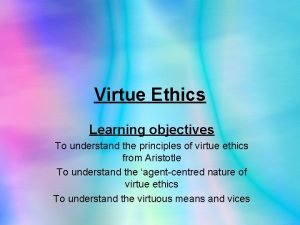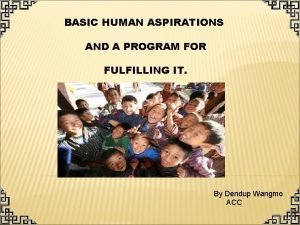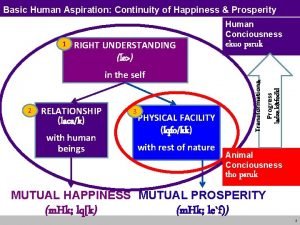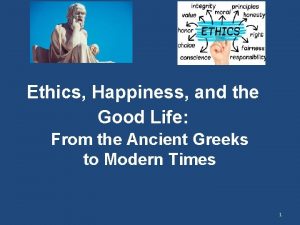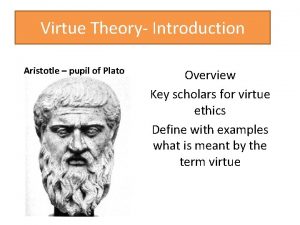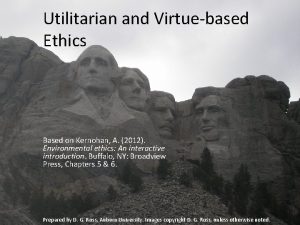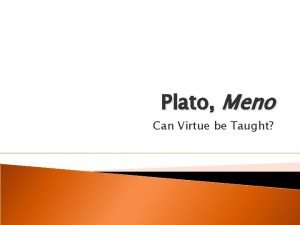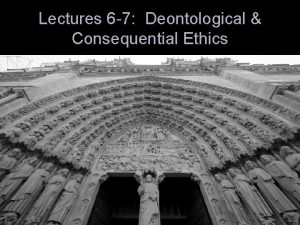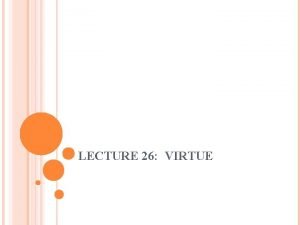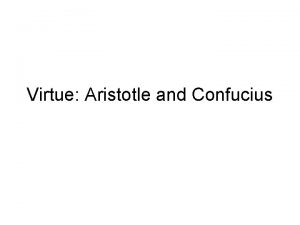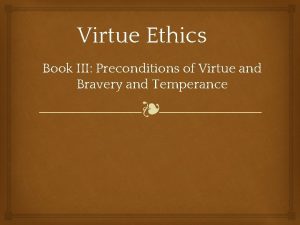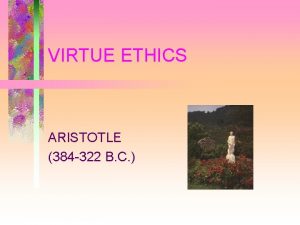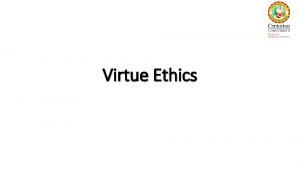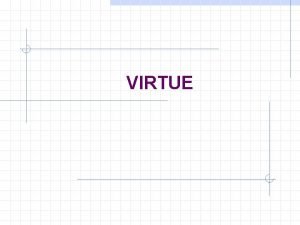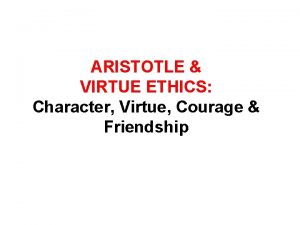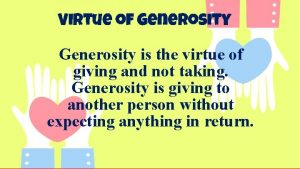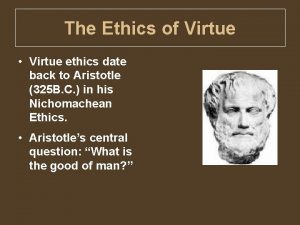SelfTranscendence Virtue and Happiness A Psychological Investigation of





















- Slides: 21

Self-Transcendence, Virtue and Happiness: A Psychological Investigation of Buddhist Perspectives on the Self and Well-Being Pelin Kesebir Cortland Dahl R i c h a r d J. D a v i d s o n Robin G oldman CENTER FOR INVESTIGATING HEALTHY MINDS University of Wisconsin-Madison

Our Project We propose to study a family of Buddhistinspired self-transcendent virtues that we expect to be closely related to happiness. Specifically, we want to: • • • develop non-self report measures for these virtues, establish their relation to happiness, create simple interventions to cultivate these virtues.

Our Project: The “Why” • Few things are more relevant to personal and societal wellbeing than a healthy relationship to one’s self. • Self-related processes play a central role in determining our happiness. • “The Curse of the Self” (Leary, 2004) • We need healthy ways of relating to our selves, especially today… • The last couple of decades witnessed a shift toward radical individualism and the glorification of a self-oriented worldview in the West (e. g. , Myers, 2000; Twenge & Campbell, 2009).


Our Project: The “Why” • Self-transcendent virtues represent ideal ways of relating to our selves. • Happiness and virtue are bi-directionally related—with virtue leading to happiness and happiness leading to virtue, in a “virtuous cycle” (Kesebir & Diener, 2014). • Most robustly linked to life satisfaction are the virtues of love, gratitude, hope, curiosity, zest, and perspective/wisdom (Park, Peterson, & Seligman, 2004). Percentage Drop in the Appearance Frequency of Virtue Words (1901 -2000) (Kesebir & Kesebir, 2012)

Our Project: The “Why” • At the center of Buddha’s teachings is the notion that suffering is rooted in confusion about the nature of the self (Bodhi, 2005). • Buddhism offers a comprehensive account of how one should relate to the self to reduce suffering and achieve well-being. • It emphasizes self-transcendence and moving beyond an isolated sense of self, by recognizing the impermanent and interdependent nature of the self.

Our Project We propose to study Buddhistinspired self-transcendent virtues that we regard as supremely important to achieving lasting well -being.

Our Project: The “How” We plan a three-stage project with distinct contributions at every stage:

The First Stage • Our first goal will be to develop measures to assess self-transcendent virtues, particularly implicit and behavioral measures. • Self-report measures have their strengths, but also their weaknesses. • People are not always able or willing to report on their true states.

The Trouble with Self-Reports

The First Stage • Our first goal will be to develop measures to assess self-transcendent virtues, particularly implicit and behavioral measures. • Self-report measures have their strengths, but also their weaknesses. • People are not always able or willing to report on their true states. • We aim to develop measures that are less susceptible to self-serving biases or impression management attempts.

The First Stage: Virtues to Study • A sense of the fundamental sameness of the human family • Humility, or a quiet ego • Perspective, or the ability to get out of oneself and see things in true perspective

Sample Research Idea To measure participants’ proneness to perceive the fundamental sameness of the human family: • Briefly expose participants to combinations of pictures of people from different backgrounds • And then ask them how similar the people in the pictures were to each other

The Second Stage • This stage will employ correlational and experimental design. • Sample research hypotheses would be: • People who score high in proneness to perceive the fundamental sameness of the human family will report higher happiness. • When experimentally manipulated to think about the fundamental sameness of the human family, participants will display higher prosociality and lower unethical behavior.

The Third Stage • We aspire to translate the conceptual findings from our research program into practical exercises. • We will come up with and test the effectiveness of practices that can cultivate different self-transcendent virtues. • What exercises can make people appreciate the fundamental sameness of the human family?

Our Project: The “How”

Deep Integration: Our Team Pelin Kesebir Cortland Dahl Richard J. Davidson Robin Goldman

Deep Integration: Our Center Mission: To cultivate well-being and relieve suffering through a scientific understanding of the mind. Vision: A kinder, more compassionate world http: //www. investigatinghealthyminds. org/

Anticipated Challenges and Strategies for Response • Our proposed project is quite ambitious. • We plan to achieve our goals despite the large scope of our project by engaging in the following strategies: • Focusing only on a limited number of virtues. • Using Amazon’s Mechanical Turk (www. mturk. com) to collect data online fast and inexpensively. • Taking advantage of the fact that several virtues can be studied simultaneously as dependent or independent variables.

Anticipated Challenges and Strategies for Response • Quantifying virtues is hard; developing measures is hard; and developing implicit measures is harder. • The issues of operationalization and construct validity will be a challenge. • We will try to deal with the inherent difficulties of operationalization by relying on our team’s expertise. • We plan to deal with the construct validity challenge by validating our implicit measures using: • Self-reports • Informant reports • Behavioral tasks

 Virtue and happiness aristotle
Virtue and happiness aristotle Justice and virtue
Justice and virtue Ccc 1806
Ccc 1806 Virtue ethics
Virtue ethics It comprises happiness sadness anger and fear
It comprises happiness sadness anger and fear Chinese symbol for health, wealth and happiness
Chinese symbol for health, wealth and happiness Happiness and prosperity in basic human aspirations
Happiness and prosperity in basic human aspirations Nothing is more precious than happiness and health.
Nothing is more precious than happiness and health. Continuity of happiness
Continuity of happiness Perry como sunrise sunset
Perry como sunrise sunset Aristotle ethics happiness
Aristotle ethics happiness Real life examples of virtue ethics
Real life examples of virtue ethics Virtue of courage example
Virtue of courage example Introduction of aristotle
Introduction of aristotle Giannis stamatellos
Giannis stamatellos Utilitarian
Utilitarian Whats virtue mean
Whats virtue mean Author of federigo's falcon
Author of federigo's falcon What is deontological ethics
What is deontological ethics Enkratic
Enkratic Kantian ethics vs utilitarianism
Kantian ethics vs utilitarianism Kinds of natural law
Kinds of natural law
